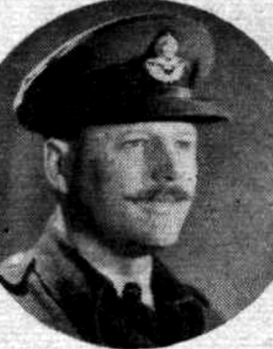Luckily for Tom, he was off again, on 8th November 1945, to take up a Post as Chief Flying Instructor on No.16 MTU (a Mosquito Training Unit) at RAF Upper Heyford.
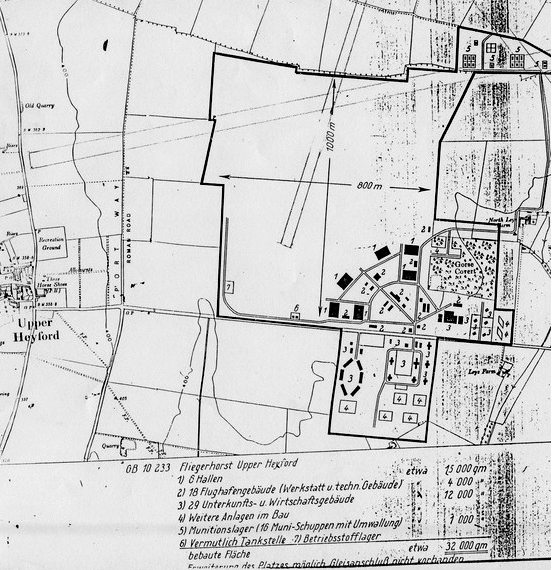
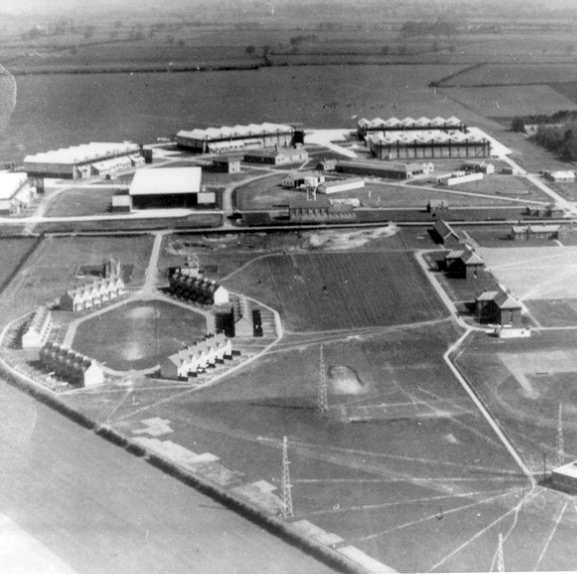
Upper Heyford was a RAF Station Located 5-miles (8-km) North-west of Bicester near the Village of Upper Heyford, Oxon. The Unit re-formed within 92-Group the same day when the Mosquito Training Unit RAF (formerly No.1655 (Mosquito Conversion Unit) was re-Designated as No.16 Operational Training Unit. It remaining at Upper Heyford until 1st March 1946 when it moved to RAF Cottesmore, where it finally Disbanded on 15th March 1947, its Aircraft & Personnel being used to create No.231 Operational Conversion Unit RAF (231 OCU) & No.204 Advanced Flying School (204-AFS)
Tom takes up the Story: ‘I’d been to Upper Heyford before, for a while – it was Jolly God – I didn’t mind that. I arrived there one Evening & got a nice Flat in the Mess, with Several Rooms – very nice indeed! All old-Fashioned Style. Then the Station Commander, Group Captain Mason – a very nice Chap – did his best to persuade me to stay in the RAF & have a Permanent Commission. I thought, well, no, I’d be due to be Posted to the Far East somewhere, as they would need people out there, to finish the War. It wasn’t fair to my Family – I had a couple of young Kids by then – to go charging off & going Voluntarily. So I thought, no, I’ll Stay-on and get this Mosquito Unit going.
Then I got called up to the Air Ministry, with somebody from Group, to a Conference. When I got there, I learned that we were apparently Selling, or Giving, Mosquitoes to the French, to re-Arm their Air Force. ‘Would I be able to Train them?’ Tom thought not, as, like most of us, his Schoolboy French was good enough to get by, Travelling to Gites (Rental Homes) & Hotels, but certainly not up to the Standard required to Instruct on a difficult Aircraft like the Mosquito! No problem – they all speak English, Tom was Assured! He made some further Enquiries. He wanted to know what Flying Experience they had, knowing full well that the French hadn’t had an Air Force for some time! Again, Tom was Assured that they would all be Pilots with ‘some‘ experience. But had they Flown Twin Engine Aircraft? Again, Tom was Assured that they had. He agreed to take on the Task. However, he stipulated that he required an Aerodrome with the Longest possible Runway (a wise precaution!). So he was sent on a 2-week Tour around the Country, to pick any Aerodrome he liked! He 1st of all tried RAF Middleton St George, Durham (now Teesside Airport), with its nice Long Runways, before turning his Attention to RAF Cottesmore, Rutland, an Aerodrome he had got to know well during his Hampden Conversion at 14-OTU in 1940, a few years earlier. Nice Long Runway, he thought, the Airfield was enlarged with Concrete Runways in 1943 but the American USAAF 316th Troop Carrier Group were Based there in 1944-45, as well as the 52nd Troop Carrier Wing HQ & would have to move out!
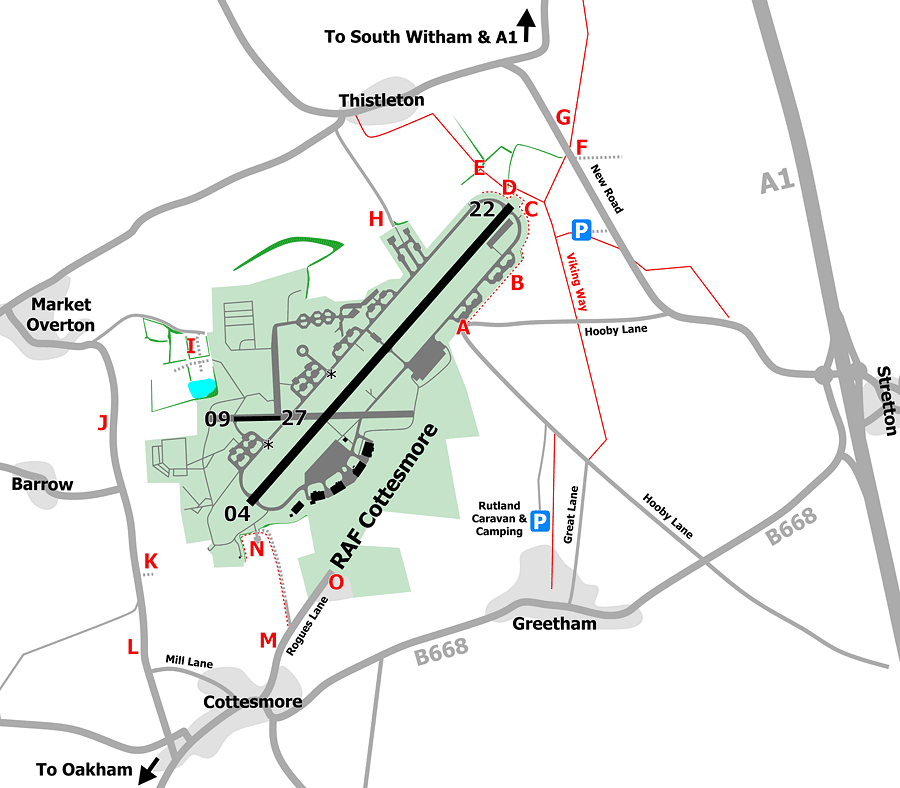
The Mosquito was not an Easy Aircraft to Fly. As Combat Aircraft Historian Bill Sweetman wrote in his Book Mosquito, it was “a slightly nervous Thoroughbred which could perform impressive feats in the hands of the Courageous & Competent – but would occasionally deal out a Kick or a Bite.”

Its Power-to-Weight Ratio & Wing Loading were both High & its Vmc, the Speed that needs to be maintained to assure Rudder effectiveness with 1-Engine Feathered & the other running at Full Power was, depending on Load, an eye-watering 172-mph or more, probably the Highest of any WW2 Twin Engined Aircraft. The rudder no longer has the Authority to overcome the Taw caused by the Critical Engine being Inoperative, under specific criteria; the lower Vmc is, the Safer the Aircraft is. There was a substantial no-man’s-land between Vlof (Lift-off Speed) & Vmc during which an Engine Failure was usually Fatal. Below Vmc, Power had to quickly be Retarded on the Good Engine to keep the Aircraft from Rolling & this meant a Loaded Mosquito could no longer Maintain Altitude. (As Cynics have said, the only reason to have 2-Engines on a Piston Twin is so the good one can take you to the Scene of the Accident.) When their Mounts were fully Gassed up and carrying a 4,000-lb Blockbuster, Mosquito Pilots learned to ignore normal Lift-off Speed & instead keep the Aircraft on the Runway no matter how Long it was and Pull-up when they were just 200-yds or so from the end.
The 1st French Course Duly arrived, and they spoke English ‘not perfectly, but Well Enough’ & they had ‘some Twin-Engined Experience, but not much’!
Tom recalls his Trials & Tribulations:
‘So, we got them Flying. Oh, they were so Dreadful & so Nervous, it isn’t true. They Broke a number of Aircraft, but none of them got Killed, but they’d Take-off & then you’d get a message from RAF Valley, Anglesey, saying: “We have a Foreign Chap here, who says that, um, he comes from you.” I said: “Yes, Impound him, nail him down – don’t let him in an Aircraft. I’ll send someone up for it & bring him back!” So I was doing this all the time – they Landed all over the place. But the 2nd Course was even Worse – they’d never Flown a Twin Engine at all & didn’t quite know what you meant by a Twin! So I then had to go and get some Oxfords & Ansons & Teach them to Fly Twins [vital to learn the Basics of Asymmetric Flying before going on to Mosquito’s!]. This went on & some of them could hardly Speak English at all in the end – so it was very difficult. But I got through, I think, 8-Courses & they Broke a great number of Aeroplanes. I remember an occasion when 1 came down, one Lunchtime & he ‘Wound-it-up on the Runway‘ (Crashed) but he Got Out. The others, all doing Circuits & Bumps Flying round in the Circuit, saw him & did exactly the Same! Six Aircraft Pranged! Yes, Broke them, because they just Lost their Nerve after seeing one of their Mates go in, but the Crews all got out. When a Mosquito ‘Went In‘, the Starboard Propeller used to come off, & Cut the Nose Off & as long as you’d got your Knees back, you were all right! If you hadn’t, that would be Bad Luck! But none of them was Injured. So this was a bit of a Dicey old Time. It was interesting, though, really. A helluva lot better than Shipping Sweeps! That took me to the End of the Flying World, doing that Lot.’
Well, not quite, Tom, because you added a Rider to this French Experience – one which should capture the attention of anybody interested in the History of No.2-Group (like you present readers). It concerns the sad end of one of the Group’s most Charismatic Pilots – Wing Commander George Laurence Bazzett ‘Bok’ Hull, DFC.

Tom recalls: ‘Now, I’ll tell you a Nasty thing that happened – not to me – but after Training all these French Fellows. I had a Chap called Hull – Wing Commander Hull.’ I asked Tom if he was known as ‘Bok’ Hull – so named because he came from South Africa, Land of the Springboks.
‘No’, Tom replied, ‘he was known at 1-Time as ‘Happy’ Hull.‘
This was news to me, but he was clearly referring to ‘Bok’ Hull of 2-Group. Tales of Bok Hull’s Escapades in 2-Group are Legendary. Perhaps the most memorable one is the time he was staying on the 1st-Floor of an Officers’ Mess and decided in the Night he would Climb out of his Window and have a Pee on the Grass outside, thinking he was on the Ground Floor. He broke both his legs in the fall & was in Plaster for 6-months!
In a Forum posted Online on 10th July 2009, ‘Bok’s’ nephew, Laurence, writes that this Accident was due to his Uncle’s habit of Sleepwalking!
Wing Commander George Laurence Bazett Hull was my mother’s Twin Brother. My 1st-Name is Laurence. He was not from Southern Rhodesia but South Africa. His Cousin, Squadron Leader Caesar Hull of 43-Hurricane Squadron out of Tangmere. was Killed in the Battle of London Docks on the 1st Day of the Switch from Bombing the Airfields to Bombing the Cities, 7th September 1940. Caesar was born in Southern Rhodesia where a Memorial was erected in The Matopos near Rhodes’ Grave. I believe this was Rescued from the Scrap Metal stripping mayhem in Zimbabwe and brought to Tangmere. Laurence came from South Africa in 1935 and joined Bomber Command, I believe on Account of a measure of Colour Blindness. His Cousin joined Fighter Command & was such an Outstanding Pilot that he was chosen to demonstrate the Spitfire to the King at Hendon. He also has a Memorial in Norway on Account of his exploits there. He was a close personal friend of Peter Townsend in 43-Squadron. Laurence’s Adventures included Sleepwalking out of his 1st-floor Barracks & falling into the only Garden Bed among the surrounding Concrete. He was 6-months in Plaster. He was in Bristol Blenheim’s for the 1st Half of the War, being Shot down in Holland in April 1942. An Engine was on his Chest. He had a month in Hospital before being Shipped to a PoW Camp, largely Stalag Luft-3. He was in the Great Escape, drawing a Late Lottery No. & being in a position to get back to Barracks when the Alarm went off. Hitler Shot 50–Escapees against the Geneva Convention. He was involved in the Cattle Truck cum Hunger March in the Winter of 1945 from Sagan to Hamburg where he was Liberated. He returned for his 1st Holiday in South Africa in 10-yrs in September 1945, where I met him at the age of 7 in Durban & with my cousins in Springs. He was Killed as noted, in the Mosquito Accident of 17th May 1946. Piloting the de Havilland DH.98 Mosquito T Mk.III Which Crashed at Goadby Marwood, Leicestershire
Tom continues:
‘He was in 2-Group early in the War his DFC was Gazetted on 24th December 1940, whilst serving on 107-Squadron. Later on in the War, he was badly Shot up. Then the Fighters got on to him, while he was making for the Dutch Coast, getting Lower & Lower, Shooting him down.’
In RAF: Bomber Command Losses of WW2: 1942 (Midland Counties Publications, 1998), W R Chorley covers this in more detail:
‘Bok Hull took-off from West Raynham at 21.36 on 17th April 1942, in Blenheim Mk IV, Z7430 RT-Q for a Night Intruder Attack on Schiphol Airport, Amsterdam; he was damaged by Light Flak and Crash-landed at 23.22 at Aalsmeer, a small Town just to the South of Schiphol.’
The Coup-de-grace was delivered by the Fighters, Bok told Tom at RAF Cottesmore. Though Tom had not known Bok very well before he came to Cottesmore, he had certainly heard of him! He recounts his Memories of this Iconic Officer:
‘At Cottesmore, he had a Room in the Mess, but he stayed for a time in my House. He used to come in the Evening & we’d have a nice Meal. We had these nice old Georgian-Type Houses, you know – if you happened to be a Wing Commander, you got a nice Place, with a Butler’s Pantry & Big Rooms & all the rest of it. We used to sit there, in the Drawing Room & put a few Drinks back, & Reminisce & Chat. That’s when I got to know more about him. But he was a good Chap – a helluva nice Chap. He told me that after he was Shot Down, and Crashed, an Engine rolled over Across his Legs. The wretched Germans left him there until the next day, saying, Oh, we can’t get a Crane out here tonight, to move that Engine. They left him there, until the next day. He then was taken to Hospital, with his Legs Broken, obviously. He became a PoW for the rest of the War. He had been in Stalag Luft-III Sagan when they were Building this great Tunnel Harry, of Tom, Dick & Harry – the Great Escape. ‘Happy’ Hull was one of the Last ones in the Tunnel when the Balloon went up & managed to Crawl backwards into the Camp. They Massacred 50 of the Escapees, on the direct Orders of Hitler. Very Nasty, very Dicey. [Bok’s nephew adds that his Uncle was also on the Hunger March from Sagan to Hamburg in the Winter of early-1945, & was Liberated in Hamburg.] Then, after the War, he was brought back, Rehabilitated & was going to take over a Mosquito Squadron. So he came to Cottesmore to do a quick Conversion onto Mosquitoes, just like I had done.’

Regrettably, Bok’s Luck Ran Out, as Tom explains: ‘On a Beautiful, Cloudless, Clear Night with a bright Moon – well after the War, no Dangers about 17th May 1946, we’d got just a few Mosquito’s, Taking off & going to a Bombing Range, & Happy Hull was doing some Circuits & Bumps. He took off, 2 or 3-Times, went round & just Flew around the Aerodrome. By this time, it was all Lit-up with Lead-in Lights & everything – really Fancy conditions. He was up there, & I remember very well, there was an Aircraft called Y-Yoke who called up, saying that he was on his way back from the Bombing Range. Happy Hull called up & said, well, I’m only sitting up here, passing time – let Y-Yoke in 1st. He continued to Stooge round the Circuit, while Y-Yoke came in & Landed. Then we called Hull up to Land, and we couldn’t raise him at all. In the end, I got nearly all the Aerodromes in the Country to Switch on their Lights, but there was no Sign of him – we just couldn’t get him. Some Hours later, I think it was the Local Defence people said, we think there is some Wreckage of a Plane, near Melton Mowbray, I think it was [the Lovely Village of Goadby Marwood, some 6-miles North of Melton Mowbray.
I said, right, I’ll come out. So I got the position of where it was and went out there & there was poor old Hull, spread out on a Field & the Mosquito Wreck. What had happened was, a Con-rod had gone & come through the Sump. When that happens & you’ve got 2-Stage Superchargers, the Pressure in the Engine of Compressed Fuel Vapour is so great, that the whole Lot goes up in a Great Big Bang!. So it just doesn’t Knock & Rattle when it stops. Because if it did, you could have Landed on 1-Engine, but the whole thing, the Engine, just disintegrated. Poor Happy Hull – I can see him there now. I went up and said, Well, we’ve got a Wing Commander missing; and they moved the Covers back, so I could have a look at him. He’d got all his Medal Ribbons on& Badges of Rank. I looked at him and said, that’s right, that’s him – look after him & bring him back to Cottesmore. Poor old Chap – that’s a nasty thing to happen, isn’t it? After all he had gone through during the War.’ The Official Record of this Crash may be found in Colin Cummings’ Book, Final Landings: A Summary of RAF Accidents & Combat Losses 1946 to 1949 (Nimbus Publishing, 2001). Bok’s Mosquito was a TIII, TW108. It was the Starboard Engine that had Failed at 1,000-ft Circuit Height & Bok had attempted a Forced Landing. On the Approach, the Aircraft Struck Trees, breaking the Tailplane & the Aircraft then hit High Ground & disintegrated. Bok was aged 34 & was the only Casualty. In summary, then, the Exploding Engine made the Mosquito virtually Unflyable, with Bok desperately trying to do a Forced Landing at Night, with no time to Transmit a Mayday Call.
Surveying one of the large fields on Hall Farm, Goadby Marwood, Farm Manager, Charlie Iddeson, happened to mention the de Havilland Mosquito that had Crashed nearby just after WW2. Several years earlier, Charlie had retrieved part of the tail section from the Wooded area bordering the Field & stored it in his Barn for safekeeping, but the exact location of the Crash Site was unknown. Unable to resist such a fascinating puzzle, in 2018 The Archeological Field Surveyors began the mammoth task of finding the Crash Site and identifying the unfortunate Pilot.
FLASH IN THE SKY – RAF Officer’s Fatal Crash – Nottingham Evening Post on 20th May 1946
It was stated at an Inquest at Melton today on Wing-Commmander. George L Bazett Hull, DFC, who was killed when his plane crashed at Goadby Marwood, near Melton on Friday night, that Lord Daresbury (4th Baronet Greenall, of Walton, Chester) was 1st on the Scene and saw the Pilot lying dead between the Wreckage. A verdict of “Accidental death from multiple injuries,” was recorded. Wing-Commander Hull, who was Flying Solo in a Mosquito from Cottesmore Aerodrome, was a South African who had Served throughout the War. Wing-Commander Jefferson told the Coroner (Mr. A. P. Marsh) that Hull was a very experienced Pilot, who was Converting to Mosquitos. On Friday he had already Flown with an Instructor. He then did 3-Solo Landings & then took off for the 4th time at 10.42 pm. Shortly afterwards he was spoken to & replied that everything was all right.
THE LAST CALL: About 10.55–pm the RAF Station saw a Light in the Sky in the direction of Melton & a Voice came out “Cottesmore.” Then there was Silence. At 11.25pm it was reported that a Mosquito had crashed at Goadby Marwood. W/O Dixon, in charge of Inspection at Cottesmore, said he had made some preliminary Tests but could not yet state the Cause of the Crash. Captain Gerald Desmond Simpson, of Waltham, said he saw the Aircraft Overhead and heard the Engines Cut Out. He watched it Circle & Lose Height. Then there was a Flash in the Sky. As soon as this happened he and Lord Daresbury went to the Scene &found Wreckage Burning. They searched for Survivors and saw the Officer between 2-Parts of the Wreckage. He was dead. His Parachute was lying on the Ground Open.
‘The Flying Hulls & Bok’s Crew of 1942’ PDF
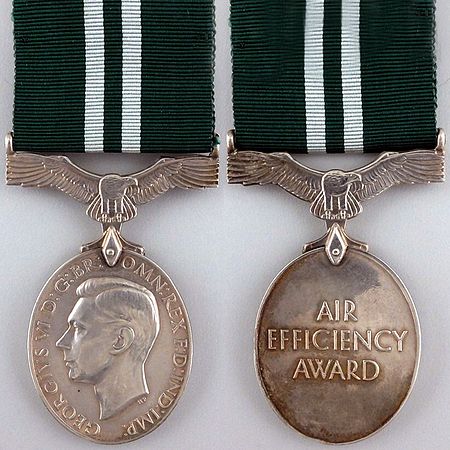
Tom’s Record of Service states that he Left No.16-MTU, Cottesmore, on 16th September 1946, obtained a ‘Class ‘A’ Release‘ on 20th September & his ‘Last Day of Service‘ was 22nd November 1946.
He received the AE (Air Efficiency Award) the same year, under AMO N.368/46. Finally, he relinquished his Commission, retaining the Rank of Wing Commander, with effect from 16th June 1959
